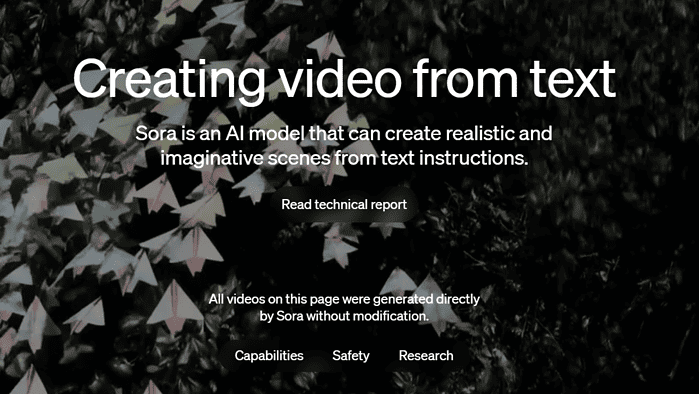Meet Sora, OpenAI's new text-to-video model that creates stunning HD videos based on text prompts
It's not a question of "can we do it," but "should we do it."
2 min. read
Updated on
Read our disclosure page to find out how can you help MSPoweruser sustain the editorial team Read more
Key notes
- OpenAI has just announced a new text-to-video AI model, Sora, and it looks impressive yet scary at the same time.
- People are now concerned whether this model will take over their jobs.
- The model will carry C2PA metadata once implemented in an OpenAI product in the future.

OpenAI has just announced a new text-to-video AI model, Sora, and it looks impressive. The premise of it looks pretty simple, yet remarkable: you can type out any word prompts, however detailed you want, and then the AI model will come back with a 60-second highly-detailed video.
Take a look at some of the results that Sora could do:
That’s honestly scary and impressive at the same time. The public reaction to it is a mix of awe and alarm, especially considering OpenAI’s past legal disputes with journalistic companies for allegedly using their articles to train the model without their consent.
And we also need to talk about potential jobs that could be replaced. Even OpenAI boss Sam Altman himself, who was once ousted from the position, said that the pace of our AI research have been advancing way too fast and the amount of adaptation that humankind needs to make is alarming.
This model builds upon past DALL-E and GPT research, using DALL-E 3’s unique recaptioning method to generate extremely descriptive captions for the visual training data. However, it still faces challenges in realistically simulating complex scenes, understanding cause-and-effect relationships, and not confusing spatial details of a prompt.
When implemented in an OpenAI product in the future, be it ChatGPT, a new offering, or Copilot, the model will carry C2PA metadata, similar to what Microsoft has been doing on Image Creator from Designer. Text and image checks guard OpenAI products against harmful content like violence, hate speech, and IP infringement.
“We are also granting access to a number of visual artists, designers, and filmmakers to gain feedback on how to advance the model to be most helpful for creative professionals,” says OpenAI.








User forum
0 messages